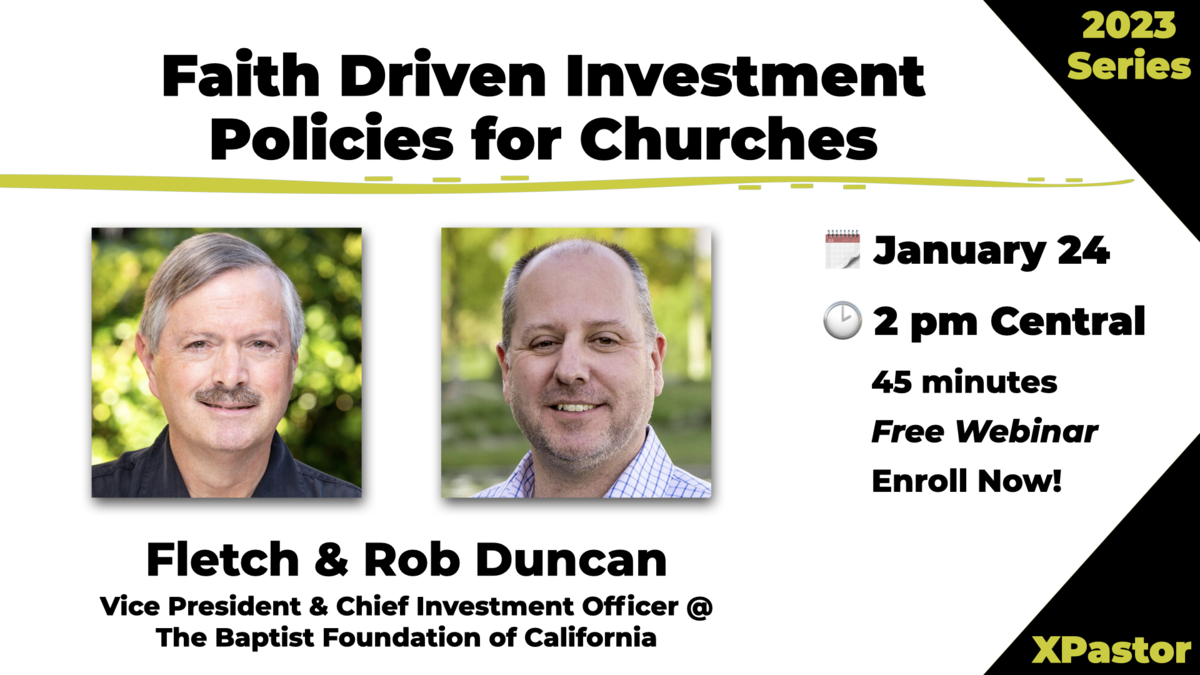We have all either heard or uttered the phrase, “How much is enough?” and the answer always seems to be, “Just a little bit more!” For ministries, resources are limited. Determining how much liquidity is needed can be difficult and feels like a shot in the dark. This article outlines the necessary steps to determine the appropriate liquidity for your ministry.
Liquidity Management
Many leaders of non-profit organizations live with the tension of constantly fluctuating cash flow. Can expenses be paid month to month? If there’s an emergency, such as the need for roof repair, or a new opportunity, such as a missions trip, will there be adequate funds to cover these unexpected needs and opportunities?
Liquidity management is the practice of managing finances in a way that allows ministries to meet their financial obligations and accomplish their mission. Without adequate financial resources, ministries can be distracted from mission fulfillment as they cope with financial pressures.
Liquidity consists of financial resources—unrestricted cash reserves and lines of credit—which can be accessed in a short period of time.
Why is liquidity management important?
Careful liquidity management is often overlooked due to a false sense of security. What appear to be large cash balances can lead ministries to believe they have sufficient cash, forgetting that unexpected expenses, the loss of key donors, or unanticipated program opportunities will quickly expose inadequate reserves.
The need for liquidity arises from the fact that daily cash inflow (income) seldom equals cash outflow (expenses). For example, ministries predictably experience a dip in donations during the summer, right when expenses are usually the highest. Further, drains on cash flow often happen without warning. Ministries with inadequate liquidity are likely to delay payments to vendors or lenders, tarnishing their reputation and costing additional funds and time to manage the situation. In more serious cases, inadequate liquidity can cause salary delays, layoffs, or suspended mission programs.
How much liquidity is adequate?
Just as each ministry’s God-given mission is unique, adequate liquidity is unique to each ministry. You need to determine your ministry’s needs, which takes discipline. If you don’t, you may experience unnecessary pain and risk preventable situations.
There are, however, some general guidelines. Two key questions to ask are: How close are your donors to your ministry, and how quickly will they respond if an unexpected need or opportunity arises?
Churches
Faithful congregants are usually faithful givers. They attend regularly, participate in current ministries and programs, and keep their fingers on the pulse of the church. Because of their awareness, they tend to respond quickly to needs or opportunities. However, this can be detrimental when scandals or discord arise. As a result, those faithful congregants may leave your ministry—and take their donations with them. Churches should have a cash reserve of 60-90 days of expenses.
One issue with church donors is their general lack of understanding of the cyclical nature of giving. Therefore, rather than stating that there is, for example, $750,000 in reserve, which can seem like a great deal of money, it’s better to communicate, “We have ninety days of expenses in reserve.” This communication helps donors understand that, without their continued giving, expenses would not be paid after ninety days.
Parachurch Ministries
Parachurch ministries experience their own issues. Because donors tend to be more distant, they are often not as aware of needs, and it can be a lengthy process to inform them. For example, a need or opportunity arises, and since your only method of communication is mail, your ministry has to draft and print a letter, stuff and address envelopes, and mail the letters. It takes days for the letters to get to the recipients, days for them to respond, and days for their responses to reach you. It could be upwards of a month before you begin receiving donations to meet your need or fund your opportunity. This potential lag time requires that parachurch ministries have a larger cash reserve to cover a minimum of ninety days of expenses.
Christian Schools
Christian schools differ because they operate much like small businesses, relying on timely payment of tuition and fees. A school that receives a significant amount of its funding at the beginning of the year may think it has adequate resources; but an unexpected event may cause a shortage of funds well before the school year ends. Because the timing of cash inflows and outflows can vary widely, cash reserves for schools need to be higher, especially at certain times of the year. At the beginning of the school year, schools should have cash reserves to cover a minimum of 60-90 days of expenses.
How do I determine adequate liquidity for my ministry?
To forecast your ministry’s liquidity needs, you need to start by determining your transaction, precautionary, and speculative requirements.
Step One: Transaction Requirements
Transaction requirements ensure that you have enough liquidity to pay for planned expenses, such as payroll. Start by looking at your budget, which should identify expected expenses during a specific period of time. However, budgets can be unrealistic if they are not prepared carefully or are outdated. To maintain a realistic budget, you should prepare a cash flow forecast, which includes a real-time review of cash inflow and outflow. Identify what has changed or will change in an upcoming period. With this information, a cash flow forecast can be compared to actual cash reserves to ensure that adequate funds are available to pay planned expenses. In addition, review your cash flow forecast regularly, perhaps quarterly, so your ministry will always have a realistic snapshot of your current cash position.
Step Two: Precautionary Requirements
Precautionary requirements ensure that you have enough liquidity to meet unplanned events and expenses. Anticipate events that might impact income or expenses, and then quantify appropriate reserves if such events were to occur. An example would be when a key donor cuts back or stops giving to your ministry. While unplanned events might differ from one ministry to another, some are common to all ministries.
Two best practices to consider:
1) Know what percentage of total income is given by top donors. Because keeping donors’ identities confidential is important, begin by looking at the percentage of total income by top donors. While you may need to look at individuals’ giving, only as appropriate, it’s best to first focus on the issue rather than specific people. This information can help a ministry determine the impact of the loss of a key donor’s contributions. A donor may move (typically an issue for a church), need funds for unexpected expenses, or pass away without having designated the ministry as an estate recipient. By knowing what percentage of income is given by top donors, a ministry can set an appropriate reserve.
2) Perform a reserve study. Identify life spans for key capital items such as HVAC systems, roofs, and carpet. For example, if your roof was replaced twenty years ago, and the original life span was thirty years, you’ll need to re-roof in ten years. If the project will cost $150,000, rather than facing an unbudgeted $150,000 expenditure then, you could put $1,250 per month into reserve for the next ten years and have the cash available when it’s time to replace the roof. Since your ministry has many similar capital items, documenting these life spans and planning accordingly will help you avoid significant unexpected cash outflows.
Step Three: Speculative Requirements
Speculative requirements ensure that you have enough liquidity to pursue unplanned opportunities. This is the place for dreams—new programs, new ministries, new staff members. For example:
- A potential staff person has just become available. If hiring this person would help fulfill your mission and funds are on reserve, then you can seize the opportunity.
- Your city asks your ministry to partner in an after-school program. With speculative cash reserves available, you could readily participate.
- A hurricane called Katrina creates an opportunity for your ministry to serve those impacted by the disaster. You can serve these people because you have cash on reserve.
You should have a policy in place to manage these funds. Since these opportunities involve strategic decisions, two or more staff or board members need to be involved in the disbursement of these funds. This might include a process by which congregants, donors, or staff members propose a need or opportunity, and a decision-making committee determines the priority and mission fulfillment of each proposal. If such a policy is not in place, you risk having your reserves go to less credible requests.
Once you’ve determined your transaction, precautionary, and speculative requirements, add the three totals together to determine how much liquidity you need to maintain in your cash reserves and short-term investments. If you don’t have adequate cash reserves available, begin to develop a plan to reach your target liquidity balance. You may also want to consider utilizing a line of credit to meet your liquidity needs.
Transaction Requirements + Precautionary Requirements + Speculative Requirements = Target Liquidity Balance
The past can be a predictor of the future. Your ministry’s history can help you anticipate its future transaction, precautionary, and speculative requirements and thereby determine appropriate liquidity.
It’s also good to talk with other ministries and financial experts, such as ECCU, to learn from their experience. Other financial management consultants within the non-profit world might be good resources as well, including your accounting firm.
Above all, resist the temptation to ignore liquidity management; it is essential to the financial health of your church or ministry. Determining and maintaining liquidity requires wisdom, planning, and discipline. The time and effort you spend will make your ministry more effective at fulfilling its mission and impacting lives for the Kingdom.
View original PDF: Liquidity











